content of level
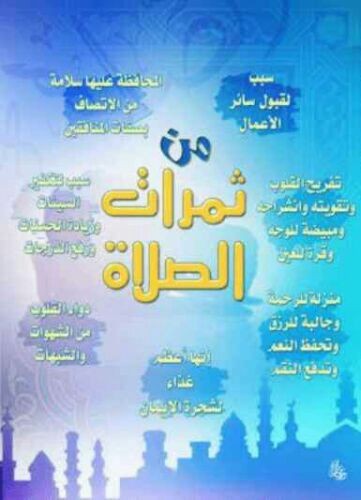
newbook5/2/20119
newbook5/2/20119newbook5/2/20119newbook5/2/20119newbook5/2/20119newbook5/2/20119newbook5/2/20119

newbook5/2/20119
newbook5/2/20119 newbook5/2/20119 newbook5/2/20119 newbook5/2/20119 newbook5/2/20119 newbook5/2/20119 newbook5/2/20119 newbook5/2/20119 newbook5/2/20119 newbook5/2/20119 newbook5/2/20119 newbook5/2/20119 newbook5/2/20119 newbook5/2/20119 newbook5/2/20119 newbook5/2/20119 newbook5/2/20119

newaudio-26/8
desc newaudio-26/8 desc newaudio-26/8 desc newaudio-26/8 desc newaudio-26/8 desc newaudio-26/8 desc newaudio-26/8 desc newaudio-26/8 desc newaudio-26/8 desc newaudio-26/8 desc newaudio-26/8 desc newaudio-26/8 desc newaudio-26/8 desc newaudio-26/8 desc newaudio-26/8 desc newaudio-26/8 desc newaudio-26/8 desc newaudio-26/8 desc newaudio-26/8 desc newaudio-26/8 desc newaudio-26/8 desc newaudio-26/8 desc newaudio-26/8 desc newaudio-26/8 desc newaudio-26/8 desc newaudio-26/8 desc newaudio-26/8 desc newaudio-26/8 v

newvideo-26/8
desc newvideo-26/8 desc newvideo-26/8 desc newvideo-26/8 desc newvideo-26/8 desc newvideo-26/8 desc newvideo-26/8 desc newvideo-26/8 desc newvideo-26/8 desc newvideo-26/8 desc newvideo-26/8 desc newvideo-26/8 desc newvideo-26/8 desc newvideo-26/8 desc newvideo-26/8 desc newvideo-26/8 desc newvideo-26/8 desc newvideo-26/8 desc newvideo-26/8 desc newvideo-26/8 desc newvideo-26/8 desc newvideo-26/8 desc newvideo-26/8 desc newvideo-26/8 desc newvideo-26/8 desc newvideo-26/8 desc newvideo-26/8

newbook-26/8
dec newbook-26/8 dec newbook-26/8 dec newbook-26/8 dec newbook-26/8 dec newbook-26/8 dec newbook-26/8 dec newbook-26/8 v

newapp-26/8
desc newcard-26/8newcard-26/8 desc newcard-26/8newcard-26/8 desc newcard-26/8newcard-26/8 desc newcard-26/8newcard-26/8 desc newcard-26/8newcard-26/8 desc newcard-26/8newcard-26/8 desc newcard-26/8newcard-26/8 desc newcard-26/8newcard-26/8 desc newcard-26/8newcard-26/8 desc newcard-26/8newcard-26/8 desc newcard-26/8newcard-26/8 desc newcard-26/8newcard-26/8 desc newcard-26/8newcard-26/8 desc newcard-26/8newcard-26/8 desc newcard-26/8newcard-26/8 desc newcard-26/8newcard-26/8 desc newcard-26/8newcard-26/8 desc newcard-26/8newcard-26/8 desc newcard-26/8newcard-26/8 desc newcard-26/8newcard-26/8 desc newcard-26/8newcard-26/8 desc newcard-26/8newcard-26/8 desc newcard-26/8newcard-26/8 desc newcard-26/8newcard-26/8 desc newcard-26/8newcard-26/8 desc newcard-26/8newcard-26/8 desc newcard-26/8newcard-26/8 desc newcard-26/8newcard-26/8 desc newcard-26/8newcard-26/8

newcard-26/8
descre newcard-26/8 descre newcard-26/8 descre newcard-26/8 descre newcard-26/8 descre newcard-26/8 descre newcard-26/8 descre newcard-26/8 descre newcard-26/8 descre newcard-26/8 descre newcard-26/8 descre newcard-26/8 descre newcard-26/8 descre newcard-26/8 descre newcard-26/8 descre newcard-26/8 descre newcard-26/8 descre newcard-26/8 descre newcard-26/8 descre newcard-26/8 descre newcard-26/8 descre newcard-26/8 descre newcard-26/8 descre newcard-26/8 descre newcard-26/8 descre newcard-26/8 descre newcard-26/8 descre newcard-26/8 descre newcard-26/8 descre newcard-26/8 descre newcard-26/8 descre newcard-26/8 descre newcard-26/8

NEW2-26/8
GFGFDGDF GFDGFG

NEW26/8
DESCRIPTION NEW26/8DESCRIPTION NEW26/8DESCRIPTION NEW26/8DESCRIPTION NEW26/8DESCRIPTION NEW26/8DESCRIPTION NEW26/8DESCRIPTION NEW26/8DESCRIPTION NEW26/8DESCRIPTION NEW26/8DESCRIPTION NEW26/8DESCRIPTION NEW26/8DESCRIPTION NEW26/8DESCRIPTION NEW26/8DESCRIPTION NEW26/8DESCRIPTION NEW26/8DESCRIPTION NEW26/8DESCRIPTION NEW26/8DESCRIPTION NEW26/8DESCRIPTION NEW26/8DESCRIPTION NEW26/8DESCRIPTION NEW26/8DESCRIPTION NEW26/8DESCRIPTION NEW26/8DESCRIPTION NEW26/8DESCRIPTION NEW26/8DESCRIPTION NEW26/8DESCRIPTION NEW26/8DESCRIPTION NEW26/8DESCRIPTION NEW26/8

item with all types
test from mobile description

item with all types
test from mobile description

item with all types
test from mobile description

item with all types
test from mobile description

item with all types
test from mobile description

item with all types
test from mobile description

test from omm
Just just just just think about the world 1400 years ago and the level of knowledge that existed, or perhaps we should say the level ignorance that was prevalent, especially in regards to the natural world. Of course some thinkers and philosophers had made some amazing discoveries, even estimating the circumference of the earth, but they also got a lot of things very wrong. Legends and myths also abounded. Reading the Quran, you find a distinct lack of such legends and myths about the creation of the universe and the natural world. Yes, there are miracles and wonders worked by the Creator to increase the faith of the faithful and confound the obstinate, but otherwise descriptions of the world and universe seem remarkably modern. You would expect the Quran to reflect the myths and legends of the time. Even if Mohammed had managed to pick up the best ideas of the time and leave out these legends, it still does not account for the remarkable consistency of the Quran with modern science. Here are a couple of verses in the Quran dealing with the universe and its creation. “Do not the Unbelievers see that the heavens and the earth were joined together (as one unit of creation), before We clove them asunder, and We made from water every living thing. Will they not then believe?” [The Quran; Chapter 21 – The Prophets, verse 30} Ever heard of the Big Bang and how the universe started as a singularity, a super-condensed ball of matter and energy? We talked about that in the beginning, remember? It sure seems that the information in the Quran is correct about something that we discovered just about seventy years ago. Then how about this: “And it is We who have constructed the heaven with might, and verily, it is We who are steadily expanding it.” [The Quran; Chapter 51 – The Winds That Scatter, verse 47] When Einstein was conjuring up his theories, the consensus among scientists was that the universe was static and had been like that forever, but new observations made it clear that this was not the case and that in fact galaxies were moving away from each other at a constant rate. In other words, the universe is expanding. More than strange is how these things came to be found in a book 1400 years old. Science is a very fickle fellow. Things which scientists all agree upon at one time are turned on their heads and are shown to be contradicted by observations at another time, so perhaps it’s not the best thing to judge a book by. Still, there are some things that seem to have been observed so often and so much that it becomes some sort of ‘fact’. One of these things is the embryonic development of humans. The idea that we go through stages of foetal development is really quite new. Lots of theories abounded in antiquity and early modern times that today seem to sound a bit silly. For example, one of the dominant theories that was prevalent in the eighteenth century was the pre-formation theory. This was the idea that animals existed pre-formed in the sperm. There were even claims of observations of this through the primitive microscopes available at the time. So much for seeing is believing! Aristotle thought that menstrual blood congealed with the aid of semen to form a foetus. It was not until the late nineteenth century that what we know today began to be clearly articulated. Yet over 1400 years ago the Quran stated: “Man We did fashion from a quintessence of clay. Then We placed him as (a drop of) fluid in a place of rest firmly fixed. Then We fashioned the fluid into a leech-like thing that clings (the word “alaq” is sometimes incorrectly translated as a blood-clot). Then We fashioned that leech-like thing that clings into a chewed-like lump. Then We fashioned the chewed-like lump into bones and We clothed the bones with flesh. Then We developed out of it another creature. So hallowed be Allah, the Best of Artisans”; [The Quran; Chapter 96 – The Clot, verses 1-2]: “…who fashioned man from a leech-like thing that clings”; and [The Quran; Chapter 22 – The Pilgrimage, verse 5]: “We fashioned you out of dust, then out of a drop of fluid, then out of a leech-like thing that clings, then out of a morsel of flesh – partly formed and partly unformed…” Keith Moore, Professor and Chairman, Department of Anatomy, University of Toronto, Canada, and author of ‘The Developing Human’, and considered one of the world’s leading embryologists, said concerning these statements in the Qur’an and authenticated hadeeth: “Until the 19th Century, nothing was known about classifying the stages of human development. A system of staging human embryos was developed around the end of the 19th Century based on alphabetical symbols. During the 20th century, numerals were used to describe 23 stages of embryonic development. This system of numbering the stages is not easy to follow and a better system would be based on the morphological changes. In recent years, the study of the Qur’an has revealed another basis for the classification of the stages of the developing embryo which is based on easily understood actions and changes in shape. It utilizes terms which were sent from God to Muhammed the Prophet by the Angel Gabriel and recorded on the Qur’an … It is clear to me that these statements must have come to Muhammad from God because almost all of this knowledge was not discovered until many centuries later. This proves to me that Muhammed must have been a Messenger of God.” Marshall Jonson, Professor and Chairman, Department of Anatomy, Director of the Daniel Baugh Institute, Thomas Jefferson University, Philadelphia, U.S.A., said: “As a scientist I can only deal with things I can specifically see. I can understand embryology and developmental biology; I can understand the words that are translated to me from the Qur’an. If I were to transpose myself into that era, knowing what I do today and describing things, I could not describe the things that were described. I see no evidence to refute the concept that this individual Muhammed had to be developing this information from some place, so I see nothing in conflict with the concept that Divine Intervention was involved on what he was able to say.”

test from omm
Just just just just think about the world 1400 years ago and the level of knowledge that existed, or perhaps we should say the level ignorance that was prevalent, especially in regards to the natural world. Of course some thinkers and philosophers had made some amazing discoveries, even estimating the circumference of the earth, but they also got a lot of things very wrong. Legends and myths also abounded. Reading the Quran, you find a distinct lack of such legends and myths about the creation of the universe and the natural world. Yes, there are miracles and wonders worked by the Creator to increase the faith of the faithful and confound the obstinate, but otherwise descriptions of the world and universe seem remarkably modern. You would expect the Quran to reflect the myths and legends of the time. Even if Mohammed had managed to pick up the best ideas of the time and leave out these legends, it still does not account for the remarkable consistency of the Quran with modern science. Here are a couple of verses in the Quran dealing with the universe and its creation. “Do not the Unbelievers see that the heavens and the earth were joined together (as one unit of creation), before We clove them asunder, and We made from water every living thing. Will they not then believe?” [The Quran; Chapter 21 – The Prophets, verse 30} Ever heard of the Big Bang and how the universe started as a singularity, a super-condensed ball of matter and energy? We talked about that in the beginning, remember? It sure seems that the information in the Quran is correct about something that we discovered just about seventy years ago. Then how about this: “And it is We who have constructed the heaven with might, and verily, it is We who are steadily expanding it.” [The Quran; Chapter 51 – The Winds That Scatter, verse 47] When Einstein was conjuring up his theories, the consensus among scientists was that the universe was static and had been like that forever, but new observations made it clear that this was not the case and that in fact galaxies were moving away from each other at a constant rate. In other words, the universe is expanding. More than strange is how these things came to be found in a book 1400 years old. Science is a very fickle fellow. Things which scientists all agree upon at one time are turned on their heads and are shown to be contradicted by observations at another time, so perhaps it’s not the best thing to judge a book by. Still, there are some things that seem to have been observed so often and so much that it becomes some sort of ‘fact’. One of these things is the embryonic development of humans. The idea that we go through stages of foetal development is really quite new. Lots of theories abounded in antiquity and early modern times that today seem to sound a bit silly. For example, one of the dominant theories that was prevalent in the eighteenth century was the pre-formation theory. This was the idea that animals existed pre-formed in the sperm. There were even claims of observations of this through the primitive microscopes available at the time. So much for seeing is believing! Aristotle thought that menstrual blood congealed with the aid of semen to form a foetus. It was not until the late nineteenth century that what we know today began to be clearly articulated. Yet over 1400 years ago the Quran stated: “Man We did fashion from a quintessence of clay. Then We placed him as (a drop of) fluid in a place of rest firmly fixed. Then We fashioned the fluid into a leech-like thing that clings (the word “alaq” is sometimes incorrectly translated as a blood-clot). Then We fashioned that leech-like thing that clings into a chewed-like lump. Then We fashioned the chewed-like lump into bones and We clothed the bones with flesh. Then We developed out of it another creature. So hallowed be Allah, the Best of Artisans”; [The Quran; Chapter 96 – The Clot, verses 1-2]: “…who fashioned man from a leech-like thing that clings”; and [The Quran; Chapter 22 – The Pilgrimage, verse 5]: “We fashioned you out of dust, then out of a drop of fluid, then out of a leech-like thing that clings, then out of a morsel of flesh – partly formed and partly unformed…” Keith Moore, Professor and Chairman, Department of Anatomy, University of Toronto, Canada, and author of ‘The Developing Human’, and considered one of the world’s leading embryologists, said concerning these statements in the Qur’an and authenticated hadeeth: “Until the 19th Century, nothing was known about classifying the stages of human development. A system of staging human embryos was developed around the end of the 19th Century based on alphabetical symbols. During the 20th century, numerals were used to describe 23 stages of embryonic development. This system of numbering the stages is not easy to follow and a better system would be based on the morphological changes. In recent years, the study of the Qur’an has revealed another basis for the classification of the stages of the developing embryo which is based on easily understood actions and changes in shape. It utilizes terms which were sent from God to Muhammed the Prophet by the Angel Gabriel and recorded on the Qur’an … It is clear to me that these statements must have come to Muhammad from God because almost all of this knowledge was not discovered until many centuries later. This proves to me that Muhammed must have been a Messenger of God.” Marshall Jonson, Professor and Chairman, Department of Anatomy, Director of the Daniel Baugh Institute, Thomas Jefferson University, Philadelphia, U.S.A., said: “As a scientist I can only deal with things I can specifically see. I can understand embryology and developmental biology; I can understand the words that are translated to me from the Qur’an. If I were to transpose myself into that era, knowing what I do today and describing things, I could not describe the things that were described. I see no evidence to refute the concept that this individual Muhammed had to be developing this information from some place, so I see nothing in conflict with the concept that Divine Intervention was involved on what he was able to say.”

test from omm
Just just just just think about the world 1400 years ago and the level of knowledge that existed, or perhaps we should say the level ignorance that was prevalent, especially in regards to the natural world. Of course some thinkers and philosophers had made some amazing discoveries, even estimating the circumference of the earth, but they also got a lot of things very wrong. Legends and myths also abounded. Reading the Quran, you find a distinct lack of such legends and myths about the creation of the universe and the natural world. Yes, there are miracles and wonders worked by the Creator to increase the faith of the faithful and confound the obstinate, but otherwise descriptions of the world and universe seem remarkably modern. You would expect the Quran to reflect the myths and legends of the time. Even if Mohammed had managed to pick up the best ideas of the time and leave out these legends, it still does not account for the remarkable consistency of the Quran with modern science. Here are a couple of verses in the Quran dealing with the universe and its creation. “Do not the Unbelievers see that the heavens and the earth were joined together (as one unit of creation), before We clove them asunder, and We made from water every living thing. Will they not then believe?” [The Quran; Chapter 21 – The Prophets, verse 30} Ever heard of the Big Bang and how the universe started as a singularity, a super-condensed ball of matter and energy? We talked about that in the beginning, remember? It sure seems that the information in the Quran is correct about something that we discovered just about seventy years ago. Then how about this: “And it is We who have constructed the heaven with might, and verily, it is We who are steadily expanding it.” [The Quran; Chapter 51 – The Winds That Scatter, verse 47] When Einstein was conjuring up his theories, the consensus among scientists was that the universe was static and had been like that forever, but new observations made it clear that this was not the case and that in fact galaxies were moving away from each other at a constant rate. In other words, the universe is expanding. More than strange is how these things came to be found in a book 1400 years old. Science is a very fickle fellow. Things which scientists all agree upon at one time are turned on their heads and are shown to be contradicted by observations at another time, so perhaps it’s not the best thing to judge a book by. Still, there are some things that seem to have been observed so often and so much that it becomes some sort of ‘fact’. One of these things is the embryonic development of humans. The idea that we go through stages of foetal development is really quite new. Lots of theories abounded in antiquity and early modern times that today seem to sound a bit silly. For example, one of the dominant theories that was prevalent in the eighteenth century was the pre-formation theory. This was the idea that animals existed pre-formed in the sperm. There were even claims of observations of this through the primitive microscopes available at the time. So much for seeing is believing! Aristotle thought that menstrual blood congealed with the aid of semen to form a foetus. It was not until the late nineteenth century that what we know today began to be clearly articulated. Yet over 1400 years ago the Quran stated: “Man We did fashion from a quintessence of clay. Then We placed him as (a drop of) fluid in a place of rest firmly fixed. Then We fashioned the fluid into a leech-like thing that clings (the word “alaq” is sometimes incorrectly translated as a blood-clot). Then We fashioned that leech-like thing that clings into a chewed-like lump. Then We fashioned the chewed-like lump into bones and We clothed the bones with flesh. Then We developed out of it another creature. So hallowed be Allah, the Best of Artisans”; [The Quran; Chapter 96 – The Clot, verses 1-2]: “…who fashioned man from a leech-like thing that clings”; and [The Quran; Chapter 22 – The Pilgrimage, verse 5]: “We fashioned you out of dust, then out of a drop of fluid, then out of a leech-like thing that clings, then out of a morsel of flesh – partly formed and partly unformed…” Keith Moore, Professor and Chairman, Department of Anatomy, University of Toronto, Canada, and author of ‘The Developing Human’, and considered one of the world’s leading embryologists, said concerning these statements in the Qur’an and authenticated hadeeth: “Until the 19th Century, nothing was known about classifying the stages of human development. A system of staging human embryos was developed around the end of the 19th Century based on alphabetical symbols. During the 20th century, numerals were used to describe 23 stages of embryonic development. This system of numbering the stages is not easy to follow and a better system would be based on the morphological changes. In recent years, the study of the Qur’an has revealed another basis for the classification of the stages of the developing embryo which is based on easily understood actions and changes in shape. It utilizes terms which were sent from God to Muhammed the Prophet by the Angel Gabriel and recorded on the Qur’an … It is clear to me that these statements must have come to Muhammad from God because almost all of this knowledge was not discovered until many centuries later. This proves to me that Muhammed must have been a Messenger of God.” Marshall Jonson, Professor and Chairman, Department of Anatomy, Director of the Daniel Baugh Institute, Thomas Jefferson University, Philadelphia, U.S.A., said: “As a scientist I can only deal with things I can specifically see. I can understand embryology and developmental biology; I can understand the words that are translated to me from the Qur’an. If I were to transpose myself into that era, knowing what I do today and describing things, I could not describe the things that were described. I see no evidence to refute the concept that this individual Muhammed had to be developing this information from some place, so I see nothing in conflict with the concept that Divine Intervention was involved on what he was able to say.”

test from omm
Just just just just think about the world 1400 years ago and the level of knowledge that existed, or perhaps we should say the level ignorance that was prevalent, especially in regards to the natural world. Of course some thinkers and philosophers had made some amazing discoveries, even estimating the circumference of the earth, but they also got a lot of things very wrong. Legends and myths also abounded. Reading the Quran, you find a distinct lack of such legends and myths about the creation of the universe and the natural world. Yes, there are miracles and wonders worked by the Creator to increase the faith of the faithful and confound the obstinate, but otherwise descriptions of the world and universe seem remarkably modern. You would expect the Quran to reflect the myths and legends of the time. Even if Mohammed had managed to pick up the best ideas of the time and leave out these legends, it still does not account for the remarkable consistency of the Quran with modern science. Here are a couple of verses in the Quran dealing with the universe and its creation. “Do not the Unbelievers see that the heavens and the earth were joined together (as one unit of creation), before We clove them asunder, and We made from water every living thing. Will they not then believe?” [The Quran; Chapter 21 – The Prophets, verse 30} Ever heard of the Big Bang and how the universe started as a singularity, a super-condensed ball of matter and energy? We talked about that in the beginning, remember? It sure seems that the information in the Quran is correct about something that we discovered just about seventy years ago. Then how about this: “And it is We who have constructed the heaven with might, and verily, it is We who are steadily expanding it.” [The Quran; Chapter 51 – The Winds That Scatter, verse 47] When Einstein was conjuring up his theories, the consensus among scientists was that the universe was static and had been like that forever, but new observations made it clear that this was not the case and that in fact galaxies were moving away from each other at a constant rate. In other words, the universe is expanding. More than strange is how these things came to be found in a book 1400 years old. Science is a very fickle fellow. Things which scientists all agree upon at one time are turned on their heads and are shown to be contradicted by observations at another time, so perhaps it’s not the best thing to judge a book by. Still, there are some things that seem to have been observed so often and so much that it becomes some sort of ‘fact’. One of these things is the embryonic development of humans. The idea that we go through stages of foetal development is really quite new. Lots of theories abounded in antiquity and early modern times that today seem to sound a bit silly. For example, one of the dominant theories that was prevalent in the eighteenth century was the pre-formation theory. This was the idea that animals existed pre-formed in the sperm. There were even claims of observations of this through the primitive microscopes available at the time. So much for seeing is believing! Aristotle thought that menstrual blood congealed with the aid of semen to form a foetus. It was not until the late nineteenth century that what we know today began to be clearly articulated. Yet over 1400 years ago the Quran stated: “Man We did fashion from a quintessence of clay. Then We placed him as (a drop of) fluid in a place of rest firmly fixed. Then We fashioned the fluid into a leech-like thing that clings (the word “alaq” is sometimes incorrectly translated as a blood-clot). Then We fashioned that leech-like thing that clings into a chewed-like lump. Then We fashioned the chewed-like lump into bones and We clothed the bones with flesh. Then We developed out of it another creature. So hallowed be Allah, the Best of Artisans”; [The Quran; Chapter 96 – The Clot, verses 1-2]: “…who fashioned man from a leech-like thing that clings”; and [The Quran; Chapter 22 – The Pilgrimage, verse 5]: “We fashioned you out of dust, then out of a drop of fluid, then out of a leech-like thing that clings, then out of a morsel of flesh – partly formed and partly unformed…” Keith Moore, Professor and Chairman, Department of Anatomy, University of Toronto, Canada, and author of ‘The Developing Human’, and considered one of the world’s leading embryologists, said concerning these statements in the Qur’an and authenticated hadeeth: “Until the 19th Century, nothing was known about classifying the stages of human development. A system of staging human embryos was developed around the end of the 19th Century based on alphabetical symbols. During the 20th century, numerals were used to describe 23 stages of embryonic development. This system of numbering the stages is not easy to follow and a better system would be based on the morphological changes. In recent years, the study of the Qur’an has revealed another basis for the classification of the stages of the developing embryo which is based on easily understood actions and changes in shape. It utilizes terms which were sent from God to Muhammed the Prophet by the Angel Gabriel and recorded on the Qur’an … It is clear to me that these statements must have come to Muhammad from God because almost all of this knowledge was not discovered until many centuries later. This proves to me that Muhammed must have been a Messenger of God.” Marshall Jonson, Professor and Chairman, Department of Anatomy, Director of the Daniel Baugh Institute, Thomas Jefferson University, Philadelphia, U.S.A., said: “As a scientist I can only deal with things I can specifically see. I can understand embryology and developmental biology; I can understand the words that are translated to me from the Qur’an. If I were to transpose myself into that era, knowing what I do today and describing things, I could not describe the things that were described. I see no evidence to refute the concept that this individual Muhammed had to be developing this information from some place, so I see nothing in conflict with the concept that Divine Intervention was involved on what he was able to say.”

test from omm
Just just just just think about the world 1400 years ago and the level of knowledge that existed, or perhaps we should say the level ignorance that was prevalent, especially in regards to the natural world. Of course some thinkers and philosophers had made some amazing discoveries, even estimating the circumference of the earth, but they also got a lot of things very wrong. Legends and myths also abounded. Reading the Quran, you find a distinct lack of such legends and myths about the creation of the universe and the natural world. Yes, there are miracles and wonders worked by the Creator to increase the faith of the faithful and confound the obstinate, but otherwise descriptions of the world and universe seem remarkably modern. You would expect the Quran to reflect the myths and legends of the time. Even if Mohammed had managed to pick up the best ideas of the time and leave out these legends, it still does not account for the remarkable consistency of the Quran with modern science. Here are a couple of verses in the Quran dealing with the universe and its creation. “Do not the Unbelievers see that the heavens and the earth were joined together (as one unit of creation), before We clove them asunder, and We made from water every living thing. Will they not then believe?” [The Quran; Chapter 21 – The Prophets, verse 30} Ever heard of the Big Bang and how the universe started as a singularity, a super-condensed ball of matter and energy? We talked about that in the beginning, remember? It sure seems that the information in the Quran is correct about something that we discovered just about seventy years ago. Then how about this: “And it is We who have constructed the heaven with might, and verily, it is We who are steadily expanding it.” [The Quran; Chapter 51 – The Winds That Scatter, verse 47] When Einstein was conjuring up his theories, the consensus among scientists was that the universe was static and had been like that forever, but new observations made it clear that this was not the case and that in fact galaxies were moving away from each other at a constant rate. In other words, the universe is expanding. More than strange is how these things came to be found in a book 1400 years old. Science is a very fickle fellow. Things which scientists all agree upon at one time are turned on their heads and are shown to be contradicted by observations at another time, so perhaps it’s not the best thing to judge a book by. Still, there are some things that seem to have been observed so often and so much that it becomes some sort of ‘fact’. One of these things is the embryonic development of humans. The idea that we go through stages of foetal development is really quite new. Lots of theories abounded in antiquity and early modern times that today seem to sound a bit silly. For example, one of the dominant theories that was prevalent in the eighteenth century was the pre-formation theory. This was the idea that animals existed pre-formed in the sperm. There were even claims of observations of this through the primitive microscopes available at the time. So much for seeing is believing! Aristotle thought that menstrual blood congealed with the aid of semen to form a foetus. It was not until the late nineteenth century that what we know today began to be clearly articulated. Yet over 1400 years ago the Quran stated: “Man We did fashion from a quintessence of clay. Then We placed him as (a drop of) fluid in a place of rest firmly fixed. Then We fashioned the fluid into a leech-like thing that clings (the word “alaq” is sometimes incorrectly translated as a blood-clot). Then We fashioned that leech-like thing that clings into a chewed-like lump. Then We fashioned the chewed-like lump into bones and We clothed the bones with flesh. Then We developed out of it another creature. So hallowed be Allah, the Best of Artisans”; [The Quran; Chapter 96 – The Clot, verses 1-2]: “…who fashioned man from a leech-like thing that clings”; and [The Quran; Chapter 22 – The Pilgrimage, verse 5]: “We fashioned you out of dust, then out of a drop of fluid, then out of a leech-like thing that clings, then out of a morsel of flesh – partly formed and partly unformed…” Keith Moore, Professor and Chairman, Department of Anatomy, University of Toronto, Canada, and author of ‘The Developing Human’, and considered one of the world’s leading embryologists, said concerning these statements in the Qur’an and authenticated hadeeth: “Until the 19th Century, nothing was known about classifying the stages of human development. A system of staging human embryos was developed around the end of the 19th Century based on alphabetical symbols. During the 20th century, numerals were used to describe 23 stages of embryonic development. This system of numbering the stages is not easy to follow and a better system would be based on the morphological changes. In recent years, the study of the Qur’an has revealed another basis for the classification of the stages of the developing embryo which is based on easily understood actions and changes in shape. It utilizes terms which were sent from God to Muhammed the Prophet by the Angel Gabriel and recorded on the Qur’an … It is clear to me that these statements must have come to Muhammad from God because almost all of this knowledge was not discovered until many centuries later. This proves to me that Muhammed must have been a Messenger of God.” Marshall Jonson, Professor and Chairman, Department of Anatomy, Director of the Daniel Baugh Institute, Thomas Jefferson University, Philadelphia, U.S.A., said: “As a scientist I can only deal with things I can specifically see. I can understand embryology and developmental biology; I can understand the words that are translated to me from the Qur’an. If I were to transpose myself into that era, knowing what I do today and describing things, I could not describe the things that were described. I see no evidence to refute the concept that this individual Muhammed had to be developing this information from some place, so I see nothing in conflict with the concept that Divine Intervention was involved on what he was able to say.”

test from omm
Just just just just think about the world 1400 years ago and the level of knowledge that existed, or perhaps we should say the level ignorance that was prevalent, especially in regards to the natural world. Of course some thinkers and philosophers had made some amazing discoveries, even estimating the circumference of the earth, but they also got a lot of things very wrong. Legends and myths also abounded. Reading the Quran, you find a distinct lack of such legends and myths about the creation of the universe and the natural world. Yes, there are miracles and wonders worked by the Creator to increase the faith of the faithful and confound the obstinate, but otherwise descriptions of the world and universe seem remarkably modern. You would expect the Quran to reflect the myths and legends of the time. Even if Mohammed had managed to pick up the best ideas of the time and leave out these legends, it still does not account for the remarkable consistency of the Quran with modern science. Here are a couple of verses in the Quran dealing with the universe and its creation. “Do not the Unbelievers see that the heavens and the earth were joined together (as one unit of creation), before We clove them asunder, and We made from water every living thing. Will they not then believe?” [The Quran; Chapter 21 – The Prophets, verse 30} Ever heard of the Big Bang and how the universe started as a singularity, a super-condensed ball of matter and energy? We talked about that in the beginning, remember? It sure seems that the information in the Quran is correct about something that we discovered just about seventy years ago. Then how about this: “And it is We who have constructed the heaven with might, and verily, it is We who are steadily expanding it.” [The Quran; Chapter 51 – The Winds That Scatter, verse 47] When Einstein was conjuring up his theories, the consensus among scientists was that the universe was static and had been like that forever, but new observations made it clear that this was not the case and that in fact galaxies were moving away from each other at a constant rate. In other words, the universe is expanding. More than strange is how these things came to be found in a book 1400 years old. Science is a very fickle fellow. Things which scientists all agree upon at one time are turned on their heads and are shown to be contradicted by observations at another time, so perhaps it’s not the best thing to judge a book by. Still, there are some things that seem to have been observed so often and so much that it becomes some sort of ‘fact’. One of these things is the embryonic development of humans. The idea that we go through stages of foetal development is really quite new. Lots of theories abounded in antiquity and early modern times that today seem to sound a bit silly. For example, one of the dominant theories that was prevalent in the eighteenth century was the pre-formation theory. This was the idea that animals existed pre-formed in the sperm. There were even claims of observations of this through the primitive microscopes available at the time. So much for seeing is believing! Aristotle thought that menstrual blood congealed with the aid of semen to form a foetus. It was not until the late nineteenth century that what we know today began to be clearly articulated. Yet over 1400 years ago the Quran stated: “Man We did fashion from a quintessence of clay. Then We placed him as (a drop of) fluid in a place of rest firmly fixed. Then We fashioned the fluid into a leech-like thing that clings (the word “alaq” is sometimes incorrectly translated as a blood-clot). Then We fashioned that leech-like thing that clings into a chewed-like lump. Then We fashioned the chewed-like lump into bones and We clothed the bones with flesh. Then We developed out of it another creature. So hallowed be Allah, the Best of Artisans”; [The Quran; Chapter 96 – The Clot, verses 1-2]: “…who fashioned man from a leech-like thing that clings”; and [The Quran; Chapter 22 – The Pilgrimage, verse 5]: “We fashioned you out of dust, then out of a drop of fluid, then out of a leech-like thing that clings, then out of a morsel of flesh – partly formed and partly unformed…” Keith Moore, Professor and Chairman, Department of Anatomy, University of Toronto, Canada, and author of ‘The Developing Human’, and considered one of the world’s leading embryologists, said concerning these statements in the Qur’an and authenticated hadeeth: “Until the 19th Century, nothing was known about classifying the stages of human development. A system of staging human embryos was developed around the end of the 19th Century based on alphabetical symbols. During the 20th century, numerals were used to describe 23 stages of embryonic development. This system of numbering the stages is not easy to follow and a better system would be based on the morphological changes. In recent years, the study of the Qur’an has revealed another basis for the classification of the stages of the developing embryo which is based on easily understood actions and changes in shape. It utilizes terms which were sent from God to Muhammed the Prophet by the Angel Gabriel and recorded on the Qur’an … It is clear to me that these statements must have come to Muhammad from God because almost all of this knowledge was not discovered until many centuries later. This proves to me that Muhammed must have been a Messenger of God.” Marshall Jonson, Professor and Chairman, Department of Anatomy, Director of the Daniel Baugh Institute, Thomas Jefferson University, Philadelphia, U.S.A., said: “As a scientist I can only deal with things I can specifically see. I can understand embryology and developmental biology; I can understand the words that are translated to me from the Qur’an. If I were to transpose myself into that era, knowing what I do today and describing things, I could not describe the things that were described. I see no evidence to refute the concept that this individual Muhammed had to be developing this information from some place, so I see nothing in conflict with the concept that Divine Intervention was involved on what he was able to say.”

Bilal the Abyssinian – One Light, Many Colors
This book, Bilal ibn Rabah: Islam's Attitude to Racial Discrimination, outlines the history of Bilal ibn Rabah, a former slave from Abyssinia who became a companion of the Prophet.

Islamic Perspective on Sex
This book discusses the Islamic approach to sex and how to satisfy sexual desires in the proper and beneficial way. When conducted in the lawful manner sex may be elevated to the rank of worship and a Muslim is rewarded for it.
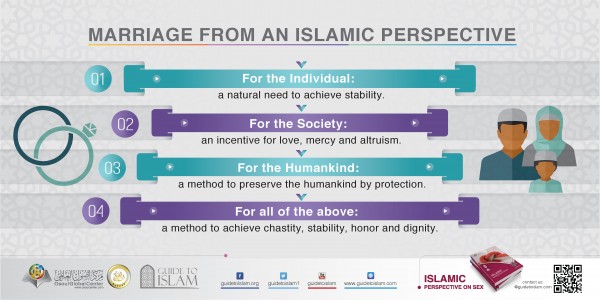
Marriage from an Islamic perspective
Marriage from an Islamic perspective

Islamic perspective on sex
The conditions of a Marriage contract in Islam:
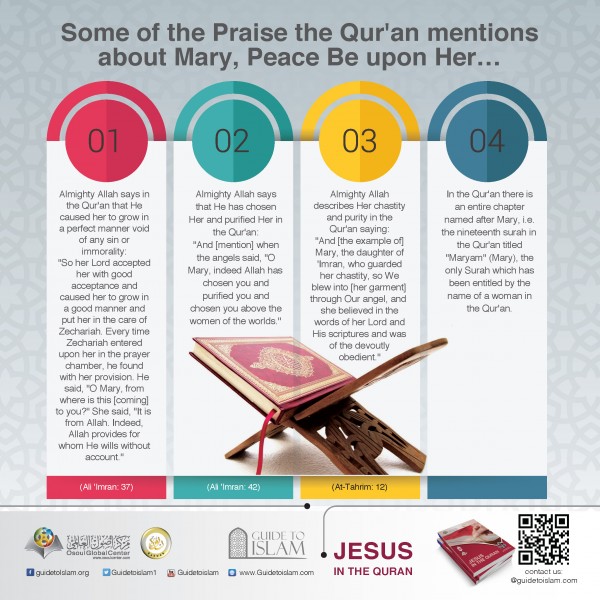
Jesus in the Quran IV
Some of the praise the Quran mentions about Mary, peace be upon Her. ..
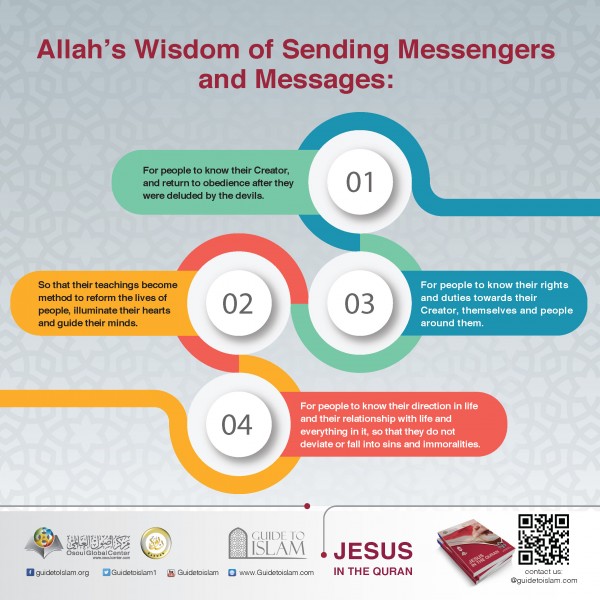
Jesus in the Quran III
Allah's wisdom to send messengers and messages:

Jesus in the Quran II
people divided about the prophet Jesus, the son of Mary, to the greatest degree:
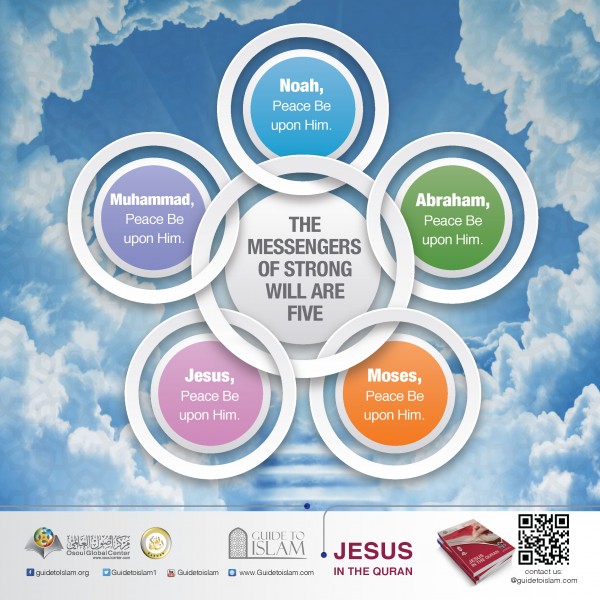
Jesus in the Quran
The Messengers of strong will are five Nuh, Ibrahim, Musa, Isa, and Muhammad peace be upon them all.
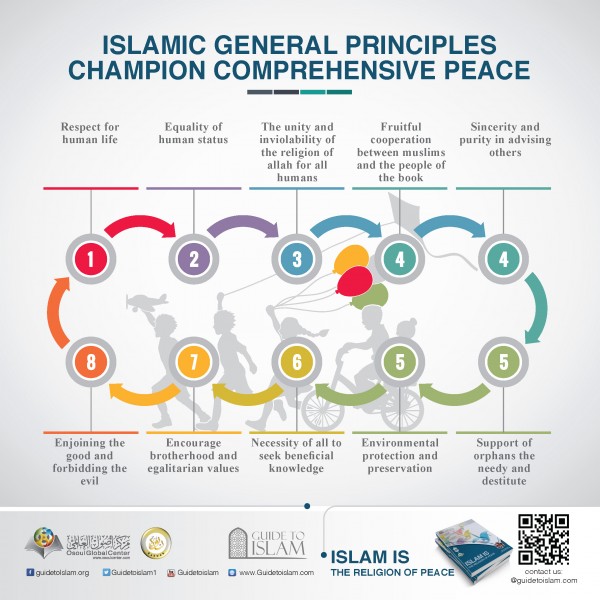
Islam is the religion of peace III
Islamic General Principles Champion Comprehensive Peace.
